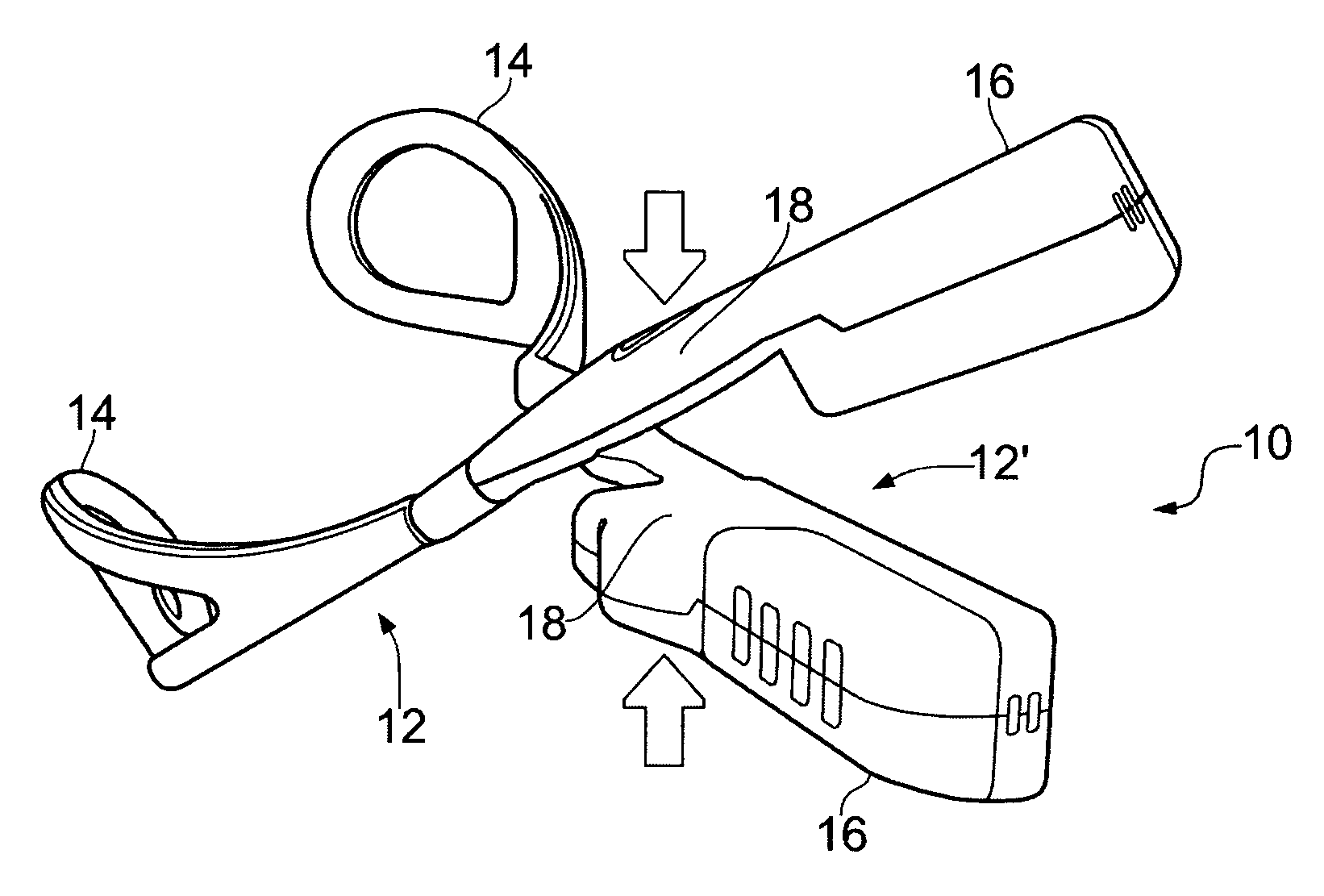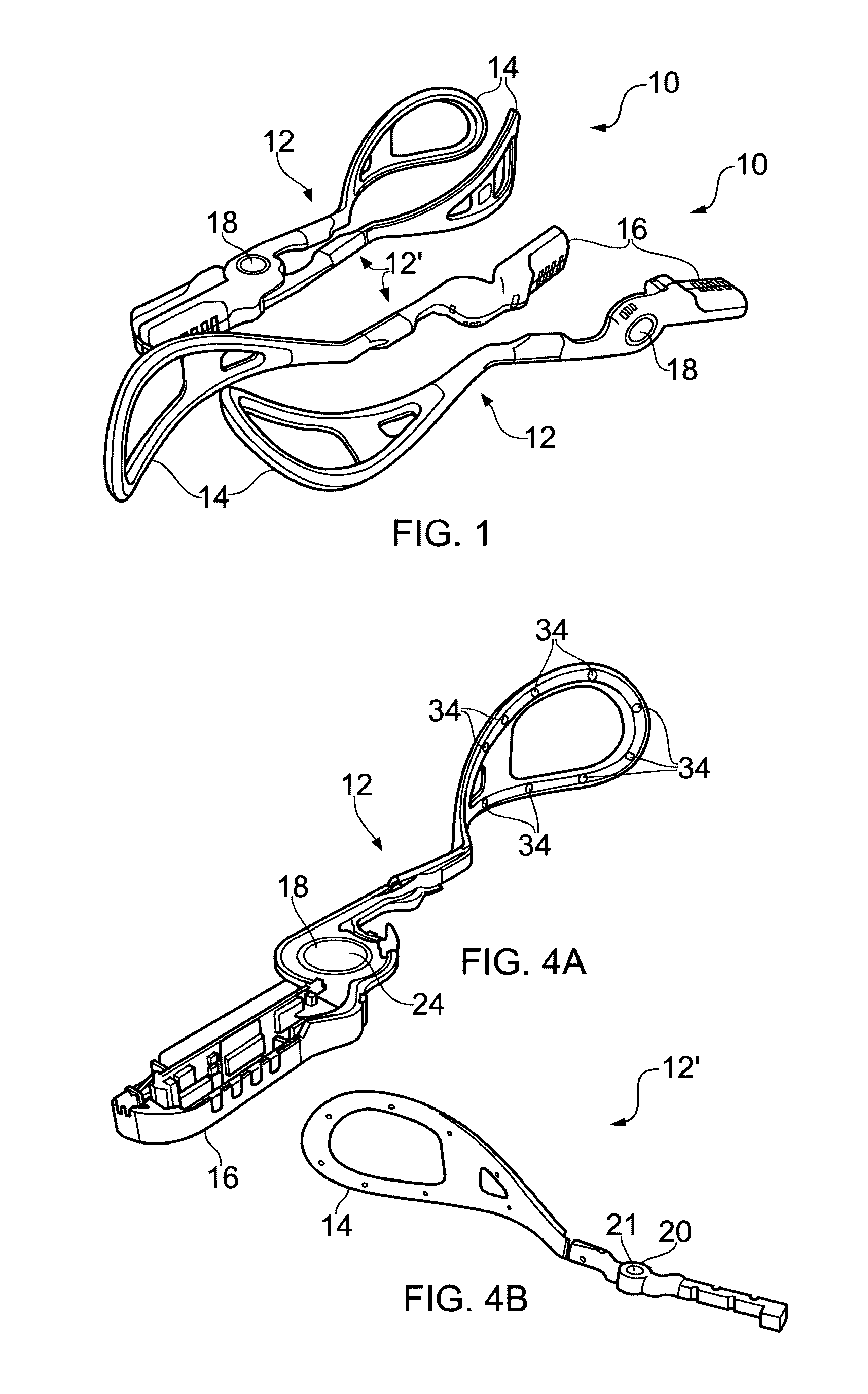Forceps
a forceps and system technology, applied in the field of forceps, can solve the problems of vacuum extrusion carrying its own risks and complications, no reliable way to ensure that excessive force is not applied, and brain damage, scalp and/or facial injuries, etc., to achieve accurate measurement of traction forces through the forceps system, facilitate smooth pivotable relative movement, and sensitive detection of force-induced deformation
- Summary
- Abstract
- Description
- Claims
- Application Information
AI Technical Summary
Benefits of technology
Problems solved by technology
Method used
Image
Examples
Embodiment Construction
[0044]FIG. 1 shows an embodiment of a forceps system 10 according to a first aspect of the present invention with the forceps members 12, 12′ in an assembled state and also a further two forceps members 12, 12′ in the unassembled state. FIGS. 4A and 4B show components of forceps member 12. The forceps system 10 of FIG. 1 is intended for obstetric use during forceps delivery.
[0045]Each of forceps members 12, 12′ comprises a blade portion 14 at a first end thereof and a respective handle portion 16 at an opposing end thereof, with a respective deformable element in the form of a deformable O-ring 20. The deformable O-ring 20 is composed of a resilient material which deforms under applied force exerted through the forceps system 10.
[0046]It will be appreciated that blade portion 14 of forceps member 12 is a mirror image of blade portion 14 of forceps member 12′. The opposing surfaces of respective forceps blade portions 14, which contact and grip the object to be held therebetween, are...
PUM
 Login to View More
Login to View More Abstract
Description
Claims
Application Information
 Login to View More
Login to View More - R&D
- Intellectual Property
- Life Sciences
- Materials
- Tech Scout
- Unparalleled Data Quality
- Higher Quality Content
- 60% Fewer Hallucinations
Browse by: Latest US Patents, China's latest patents, Technical Efficacy Thesaurus, Application Domain, Technology Topic, Popular Technical Reports.
© 2025 PatSnap. All rights reserved.Legal|Privacy policy|Modern Slavery Act Transparency Statement|Sitemap|About US| Contact US: help@patsnap.com



